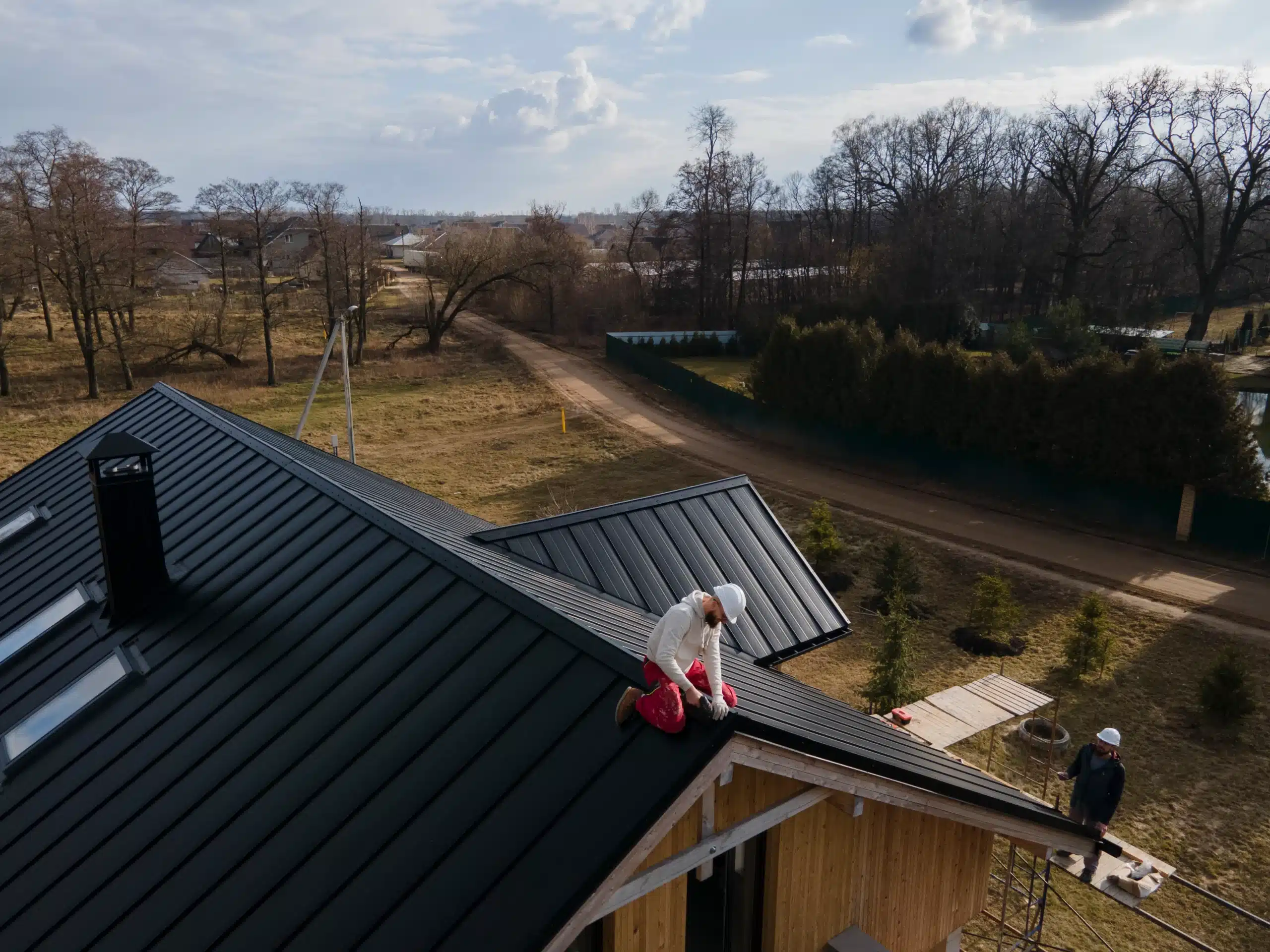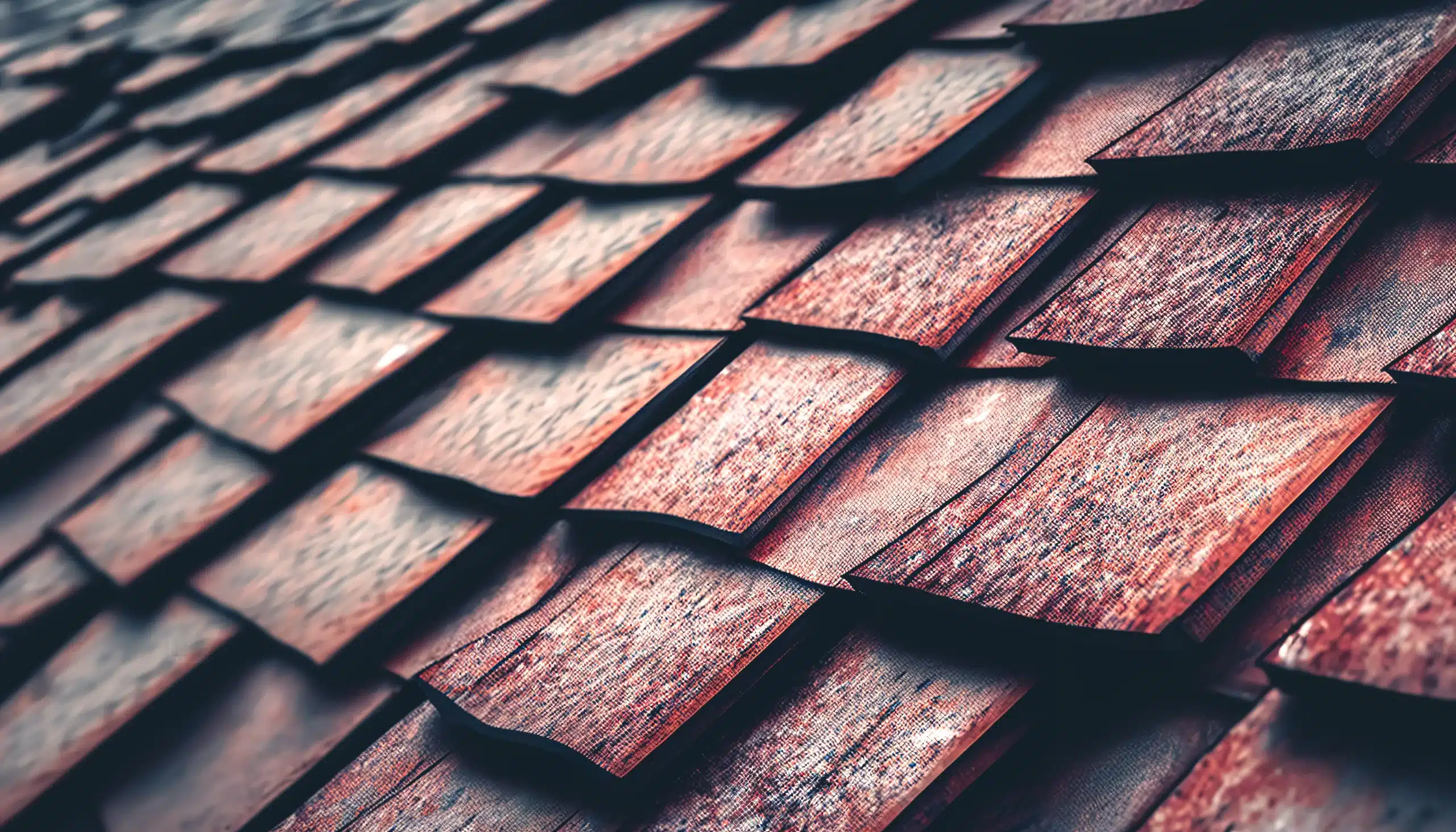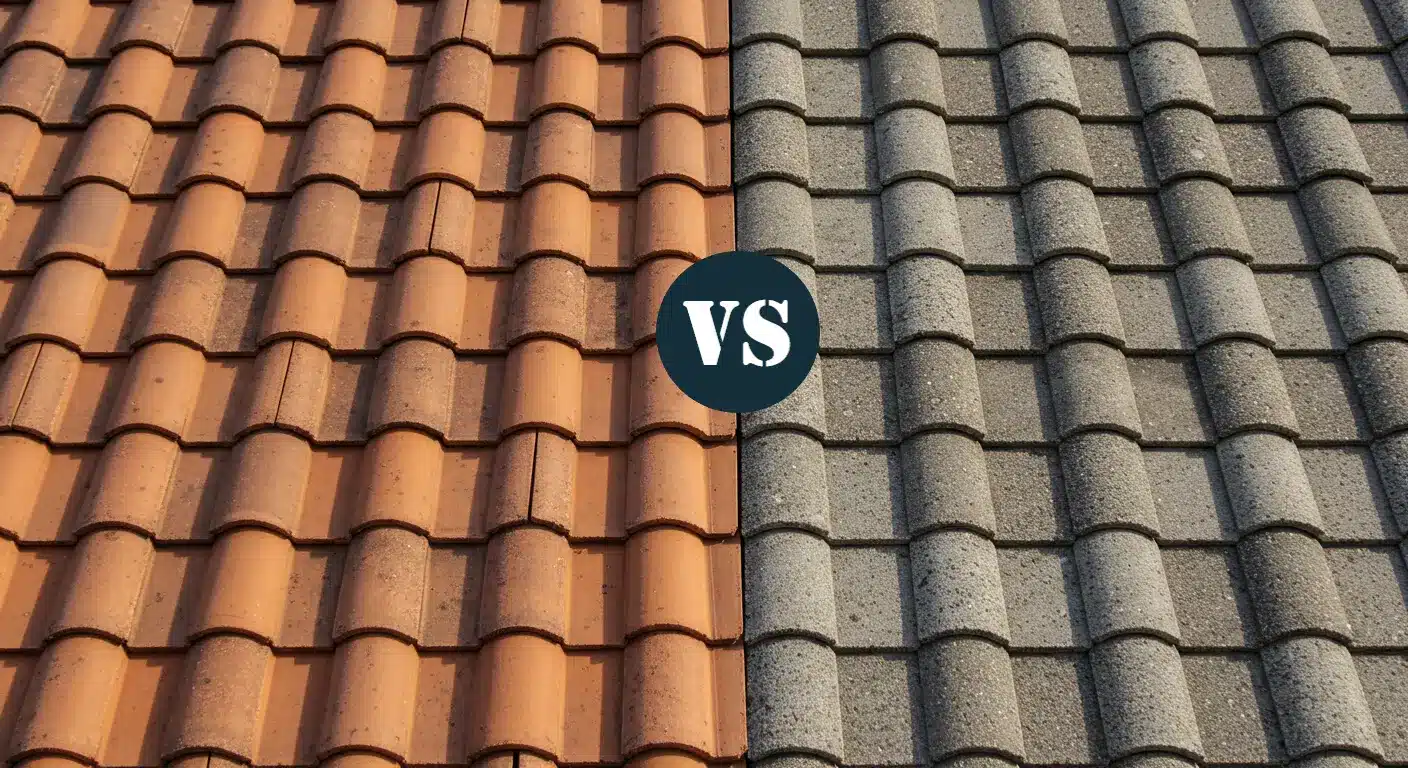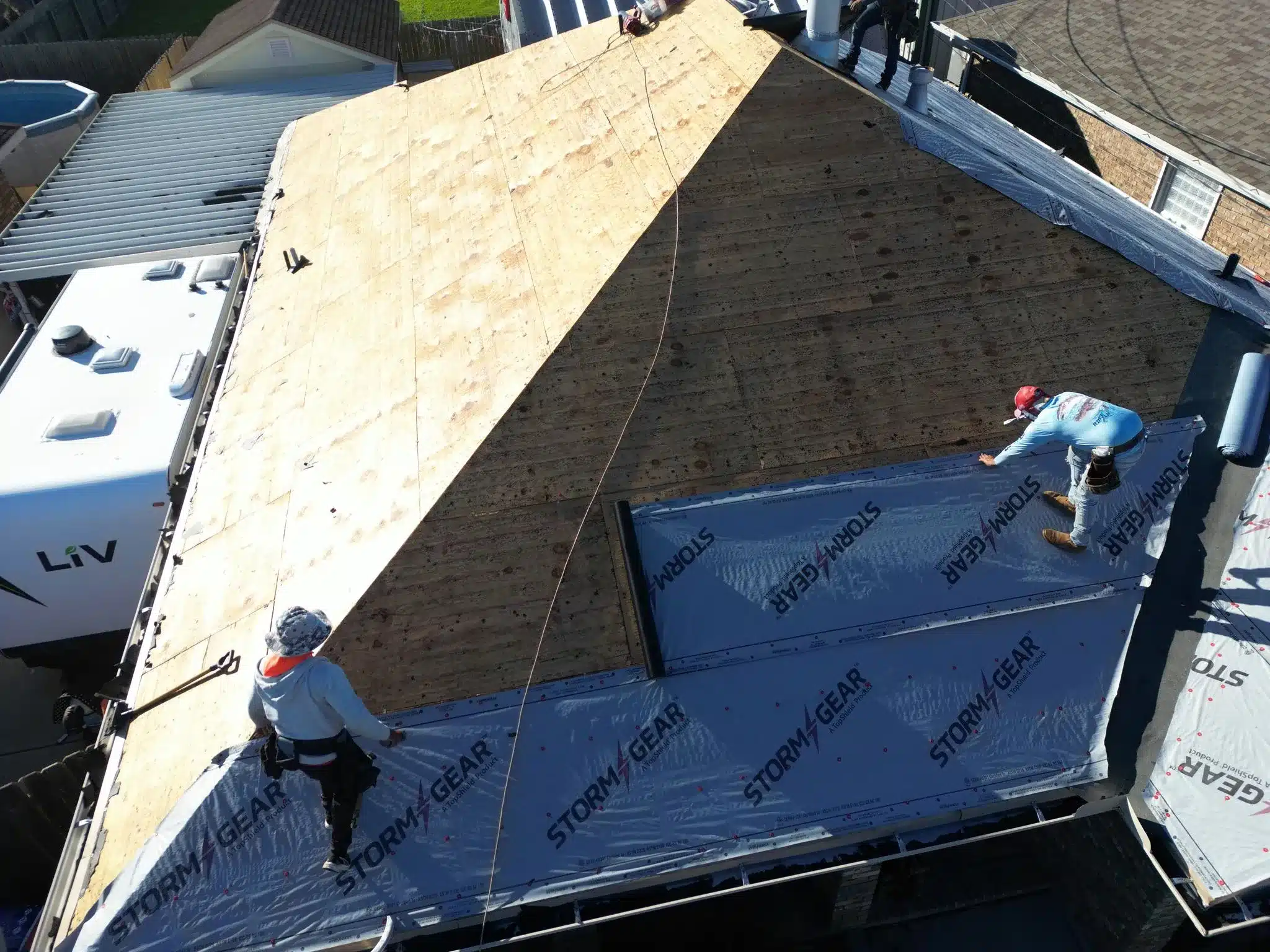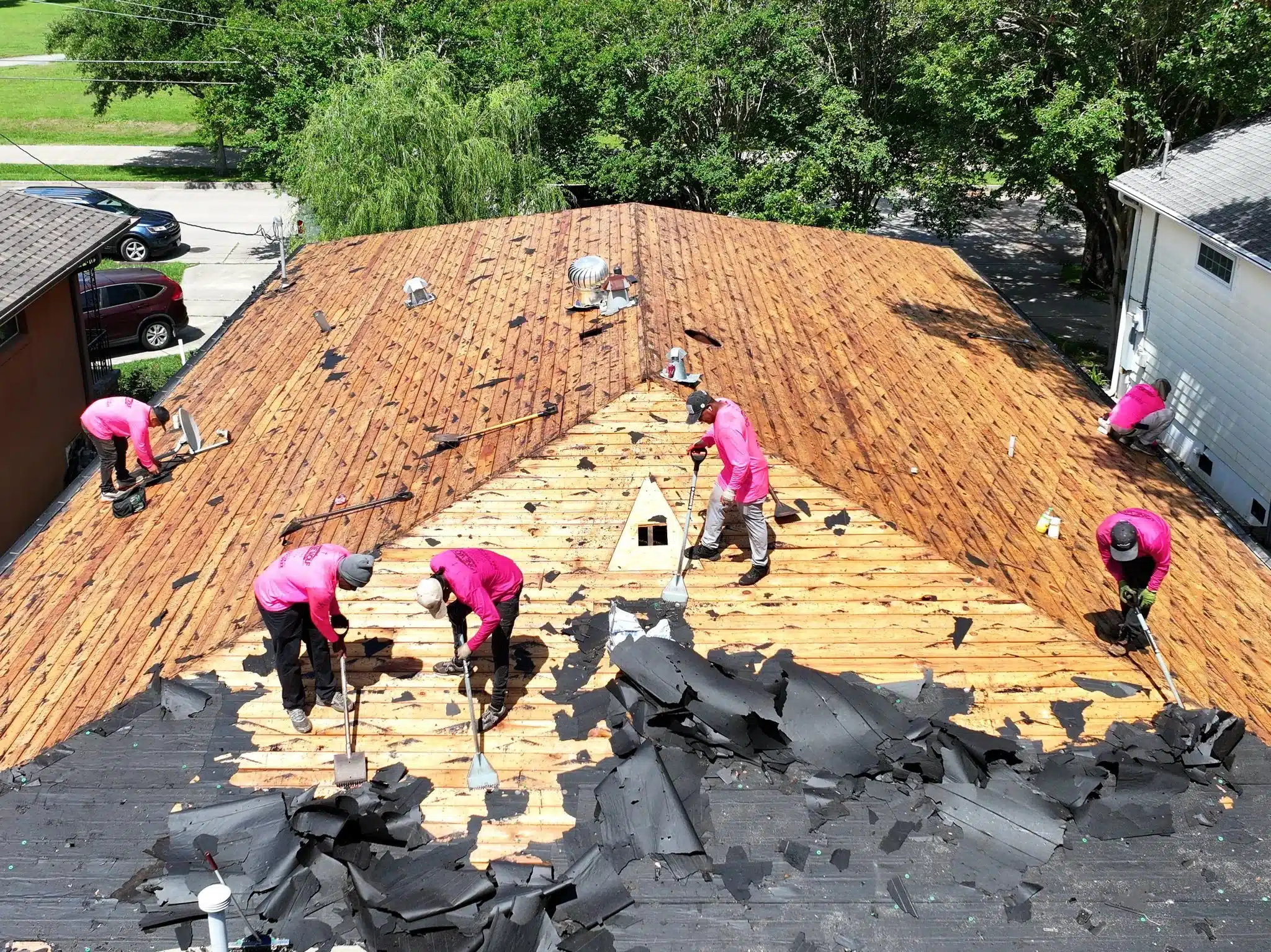A roof is more than just shingles. It’s a carefully engineered system made up of several components, each playing a critical role in protecting your home. Whether you’re a homeowner, a DIY renovator, or a student learning the trade, understanding the full anatomy of a roof helps you spot problems early and make smarter roofing decisions.
In this guide, we’ll walk you through all the parts of a roof system, explain their functions, and provide a visual roof parts diagram to tie it all together.
The Basic Parts of a Roof
Let’s start with the foundational elements — the structural and exterior parts you see (and some you don’t).
1. Roof Decking (Sheathing)
The roof deck is the base layer that covers the rafters and trusses. It’s typically made of plywood or OSB (oriented strand board). All other roofing layers are installed on top of the decking.
Tip: If you’re planning to re-roof your home, make sure your contractor inspects the decking for rot or mold before installing new shingles.
2. Trusses and Rafters
These form the residential roof structure, acting like the skeleton of the roof. Trusses are prefabricated supports, while rafters are traditional beams that support the decking. Both are essential to evenly distribute weight and provide long-term stability.
Learn more about Residential roofing
3. Underlayment
This water-resistant or waterproof layer sits between the decking and shingles, offering extra protection against moisture. In rainy or humid climates, synthetic underlayment offers greater durability than traditional felt.
4. Shingles or Roof Covering
Shingles are the visible exterior material — asphalt, metal, clay, or slate — that provide the first line of defense against the elements. They also contribute to curb appeal and energy efficiency.
Homeowner Tip: Lighter-colored shingles reflect sunlight and help keep attics cooler in hot climates.
Important Edge Components
The edges of your roof play a big role in drainage and protecting the interior structure from water damage.
5. Fascia
The fascia is the board that runs along the lower edge of the roof. It supports the gutters and helps keep water from reaching the roof deck. Often made of wood, PVC, or aluminum, it also creates a clean visual finish.
Just got a new roof? Here’s what to check after having a new roof installed
6. Soffit
The underside of a roof overhang is called the soffit. It ventilates the attic space and helps prevent mold buildup. Without it, your roof system may trap moisture and heat, leading to higher utility bills and potential damage.
7. Drip Edge
This metal flashing is installed along the edges of the roof to guide water off the eaves and into the gutters, protecting the fascia and decking. It’s a small but essential part of moisture defense.
Key Functional Components
Every part of the roof must work together to prevent leaks and structural damage. These parts often go unnoticed but are essential.
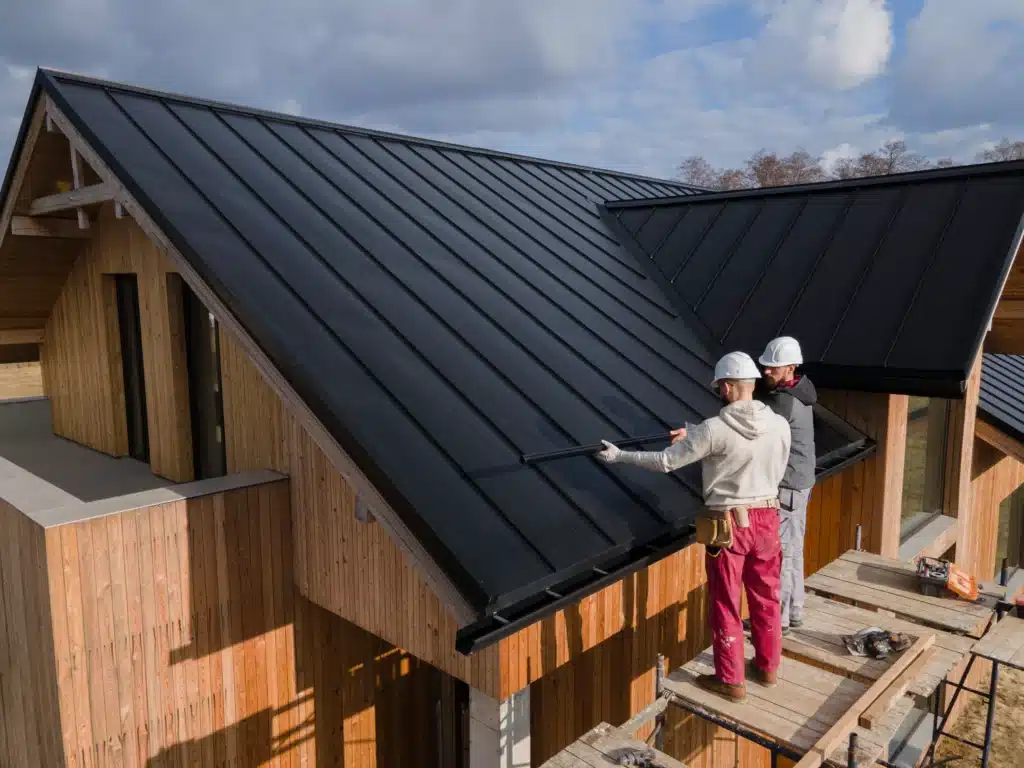
8. Flashing
Flashing is metal (often aluminum or galvanized steel) used around chimneys, vents, and valleys to seal joints and prevent leaks. It’s especially important in areas where different roof slopes meet.
9. Ridge
The ridge is the top horizontal line where two roof planes meet. This is often covered with a ridge cap to prevent water penetration and give the roof a finished look.
Considering upgrades? Start by choosing the right roof type
10. Ridge Vent
This allows hot, moist air to escape from the attic, helping regulate temperature and reduce condensation. Combined with soffit vents, it promotes healthy airflow in your attic.
11. Valleys
Where two roof sections meet at a slope, a valley is formed. Valleys guide water safely down to the gutters. They’re reinforced with metal flashing to prevent pooling and leaks.
Pro Tip: Always keep valleys free of leaves and debris to avoid water backup.
Layers Beneath the Surface
Beyond the visible elements, roofs include critical layers that protect your home from wind, rain, and heat.
12. Ice and Water Shield
This self-adhesive membrane is applied in valleys and eaves for extra waterproofing in vulnerable areas. It’s especially vital in regions prone to freezing temperatures and ice dams.
13. Insulation
While not technically part of the roof, insulation just below the roof deck helps regulate your home’s temperature and energy use. Proper insulation also reduces the strain on your HVAC system.
Need local service? Hire a trusted roofing company in Metairie
Roof Lifespan and Maintenance
Understanding the components of a roof is just the beginning. Maintaining them is what extends your roof’s lifespan.
- Asphalt shingles: Last 15–30 years
- Metal roofs: Can last 40–70 years
- Wood shingles/shakes: Around 20–40 years
- Slate/tile roofs: Up to 100 years with proper care
Regular maintenance such as cleaning gutters, checking flashing, and inspecting after storms can save you thousands in repairs. Schedule annual inspections, and address minor issues before they escalate.
Visualizing the Roof System
Below is a labeled roof parts diagram that illustrates how all the components fit together. It includes:
- Structural elements like rafters and decking
- Protective layers such as underlayment and ice shields
- External features like shingles, flashing, and ridge vents
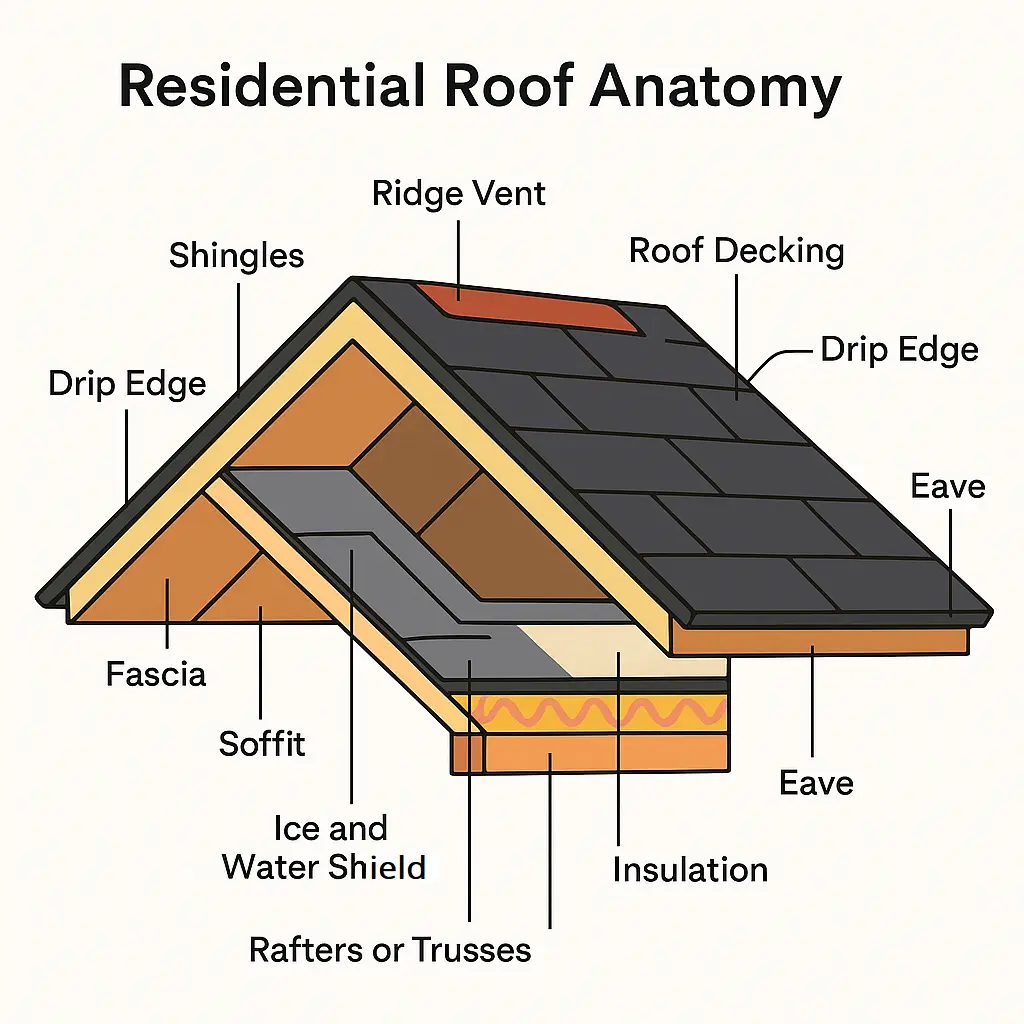
Make sure you know the names and locations of each component before tackling repairs or choosing a new roof. Visual learners benefit greatly from understanding how everything is interconnected.
Final Thoughts: Why Roof Anatomy Matters
Understanding what the parts of a roof are called helps you communicate more effectively with roofing contractors, detect early signs of damage, and plan better for maintenance or upgrades.
The more you know about the anatomy of a roof, the more confident you’ll feel when hiring contractors or planning a new roofing project.
Need expert help with your roofing system? Contact us for a free roof inspection!
FAQs About Roof Components
What are the basic parts of a roof?
The basic roof components include the decking, underlayment, shingles, fascia, soffit, flashing, and ridge. These work together to create a durable and weather-resistant structure.
What are the layers of a roof?
Roof layers typically include decking, ice and water shield, underlayment, shingles, and sometimes an added insulation layer underneath. Each layer serves a specific protective function.
What is the edge of a roof called?
The edge of a roof may refer to several parts: the fascia (horizontal board), drip edge (metal flashing), or eaves (overhanging part).
What is the underside of a roof called?
The underside of a roof’s overhang is known as the soffit. It provides attic ventilation and adds a finished look to the roof edge.
What is a roof valley and why is it important?
A roof valley is the V-shaped area where two roof slopes meet. It plays a critical role in channeling rainwater and snow runoff into the gutters. Proper flashing in valleys prevents leaks.
What part of the roof supports the weight?
The rafters or trusses support the entire weight of the roof. These structural components transfer the load to the walls of your home.
Why is attic ventilation important?
Good ventilation (via ridge and soffit vents) prevents moisture buildup, regulates temperature, and extends the lifespan of roofing materials and insulation.
Can roof components vary between homes?
Yes, roofing materials and components can vary based on climate, architectural style, and homeowner preferences. However, the core anatomy is typically the same for most residential roofs.
How often should a roof be inspected?
Professionals recommend a roof inspection at least once a year and after any major storm. This helps identify issues early before they become expensive problems.
For more technical terminology and visual references, explore GAF’s Roof components guide.

